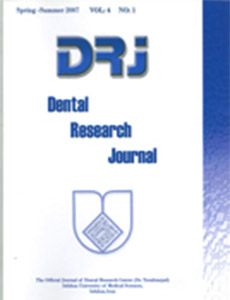Dental Research Journal
FRANCESCA CURA1, ANNALISA PALMIERI2, AMBRA GIRARDI1, MARCELLA MARTINELLI3, LUCA SCAPOLI1, FRANCESCO CARINCI2
1Departments of Histology, Embryology and Applied Biology, Centre of Molecular Genetics, CARISBO Foundation, University of Bologna, Bologna,
2Department of Medical-Surgical Sciences of Communication and Behavior, Section of Maxillofacial and Plastic Surgery, University of Ferrara, Ferrara.
Abstract
Dental caries is one of the most common infectious multifactorial diseases worldwide, characterized by the progressive demineralization of the tooth, following the action of bacterial acid metabolism. The main factors predisposing the onset of the carious process are: 1) the presence of bacterial species able to lower the pH until critical values of 5.5, 2) the absence of adequate oral hygiene, 3) an inefficient immune response anti‑caries, 4) the type of alimentary diet and 5) the structure of the teeth. Among the 200 bacterial species isolated from dental plaque the most pathogenic for dental caries are: Streptococcus mutans, Streptococcus sobrinus, Lactobacillus acidophilus, Actinomices viscusus
and Bifidobacterium dentium. Our laboratory (LAB s.r.l., Codigoro, Ferrara, Italy) has developed a test for absolute and relative quantification of the most common oral cariogenic bacteria. The test uses specific primers and probes for the amplification of bacteria genome sequences in Polymerase Chain Reaction Real Time. The results provide a profile of patient infection, helpful for improving the diagnosis and planning of preventive treatment to reduce the bacterial load.

